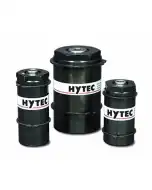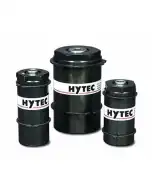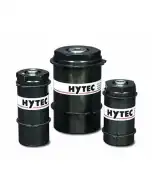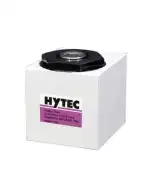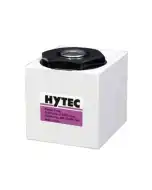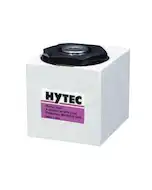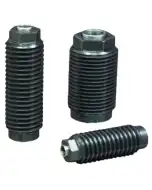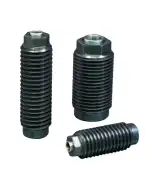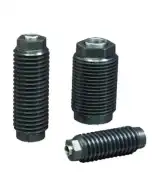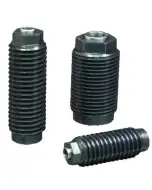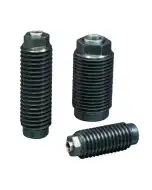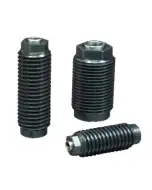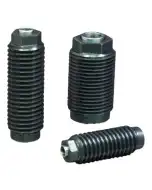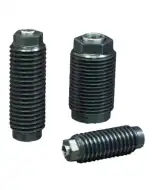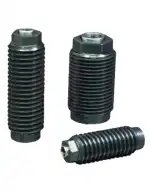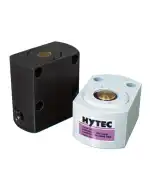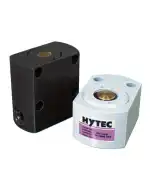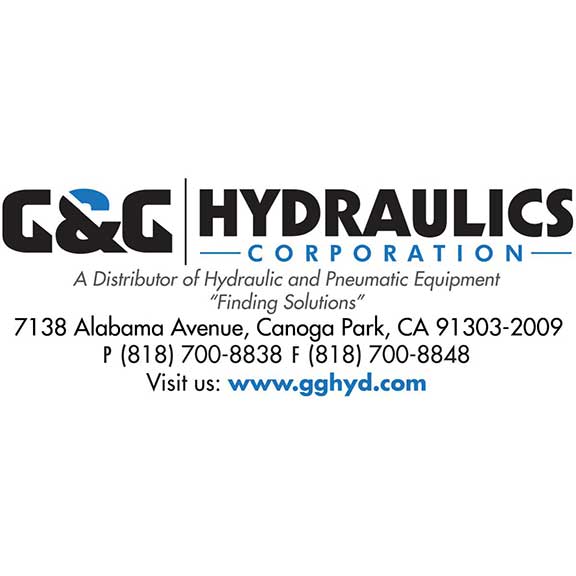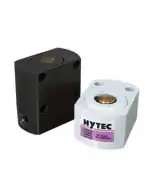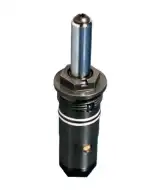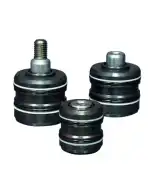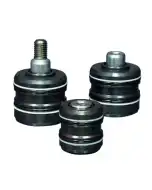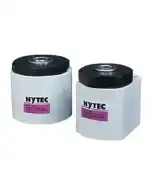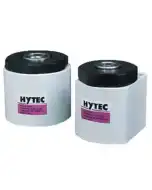Cylinders
Hydraulic Cylinders for Sale
Hydraulic cylinders are critical pieces of heavy equipment that rely on hydraulic systems for pushing, pulling, lifting, or lowering anything. At G&G Hydraulics Corporation, we bring you an exhaustive list of hydraulic cylinders from top brands you can trust, like SPX Hytec and SPX Power Team. Whatever the application, you’re sure to find what you need.
- $677.65 $761.40
- $752.67 $845.70
- $790.85 $888.60
- $934.59 $1,050.10
- $501.38 $563.35
- $722.77 $812.10
- $903.53 $1,015.20
- $233.00 $261.80
- $312.66 $351.30
- $251.25 $282.30
- $237.90 $267.30
- $230.33 $258.80
- $201.67 $226.60
- $153.49 $172.46
- $287.37 $322.89
- $237.90 $267.30
- $114.24 $128.00
- $126.74 $142.00
- $235.41 $264.50
- $233.09 $261.90
- $229.35 $257.70
- $386.61 $434.39
- $273.23 $307.00
- $641.96 $721.30
- $1,129.32 $1,268.90
- $435.66 $489.50
- $414.47 $465.70
- $382.62 $429.91
- $502.04 $564.09
- $972.59 $1,092.80
- $371.75 $417.70
- $310.35 $348.71
- $265.97 $298.00
- $48.76 $54.79
- $41.06 $46.00
- $91.93 $103.00
- $37.84 $42.40
- $44.80 $50.20
- $44.80 $50.20
- $68.81 $77.10
- $1,118.37 $1,256.60
- $1,196.96 $1,344.90
- $861.88 $968.40
- $966.52 $1,085.98
- $826.54 $928.70
- $966.54 $1,086.00
- $1,018.34 $1,144.20
- $304.29 $341.90
- $312.70 $351.35
Heavy-Duty Construction for Reliable Performance
Find a complete line of high-performance, high-torque industrial hydraulic cylinders—available from small to extra large—so you can choose what suits your application. Our steel and aluminum hydraulic cylinders for sale feature heavy-duty construction and multiple stroke strengths to keep up with frequent use.
Choose from various cylinder actuation options, including single-acting, spring return, or double-acting. G&G Hydraulics Corporation offers a wide range of cylinder designs, capacities, stroke ranges, cylinder weights, internal pressure capacities, cylinder mounting options, and features to choose from.
High-Quality Hydraulic Cylinders for Your Needs
Access to the right hydraulic supplies and accessories is critical to keep your heavy equipment operational and productive. Our high-quality hydraulic cylinders are designed to suit your needs. We know that our hydraulic cylinders for sale will serve you better and offer returns in efficiency and a longer lifespan.
As a certified seller of trusted brand hydraulic supplies with over 700 five-star ratings, we’re your preferred partner for high-quality hydraulic equipment products. We offer excellent customer service and a live chat feature. Call us if you need assistance choosing parts or have any questions about our supplies.
Buy Now at G&G Hydraulics Corporation
Whether you need new industrial hydraulic cylinders to improve your hydraulic equipment operations or replacement parts for your heavy machines, you can shop with confidence at G&G Hydraulics Corporation. Browse our online store to find the best hydraulic cylinders for sale. Order now or contact us to learn more.
Frequently Asked Questions
What cylinder types can I find at G&G Hydraulics?
Browse our inventory and you’ll discover single-acting, double-acting, and spring-return options. We don’t skimp on materials–only tough steel and aluminum cylinders make it to our shelves. Need specific capacities? Various stroke lengths? Different mounting styles? We’ve got ‘em all. Just filter by your specs on our site to narrow down choices fast.
Why pick aluminum cylinders instead of steel?
Weight savings is the big one–up to 65% lighter than steel models. This makes positioning way easier, especially in tight spots. Don’t worry about durability, though: our hydraulic cylinders for sale can handle corrosive environments. Many contractors choose aluminum for mobile applications or when frequent repositioning is needed.
Can your cylinders handle serious industrial workloads?
Our cylinders are built like tanks, and everything we stock is designed to withstand the demands of an industrial worksite. You’ll find cylinders that keep performing through thousands of cycles. No weak components here, just serious industrial-grade hydraulics.
How do I choose the right industrial hydraulic cylinder to meet my needs?
When looking for hydraulic cylinders for sale, it’s important to match cylinder tonnage to your load plus a hefty safety margin (20% should be good). Consider duty cycle: occasional use versus continuous operation requires different designs. Check your spatial constraints and required stroke length. Think about your environment: high-temperature applications need special seals. Don’t forget the mounting style: clevis, flange, or side-mount options affect installations. You can always contact us with your specifics!
What maintenance is required for hydraulic cylinders?
Inspect seals monthly for leaks – tiny weeps can eventually become floods! Keep rod surfaces clean; even small scratches can ruin seals. Check the mounting points for looseness (our hydraulic cylinders for sale are guaranteed not to have this problem!). Store cylinders with rods fully retracted when possible. Replace hydraulic fluid annually or after 1,000 hours of operation. Most importantly: document pressure ratings and never exceed them, even “just this once.”
What are the differences between single-acting and double-acting cylinders?
Single-acting cylinders use hydraulic pressure to extend but rely on gravity or springs to retract – perfect for simple lifting jobs. Double-acting models apply hydraulic force in both directions, giving precise control during both extension and retraction. Double-acting cylinders cost more but offer better control for positioning tasks. For pure lifting power, single-acting often does the trick.


